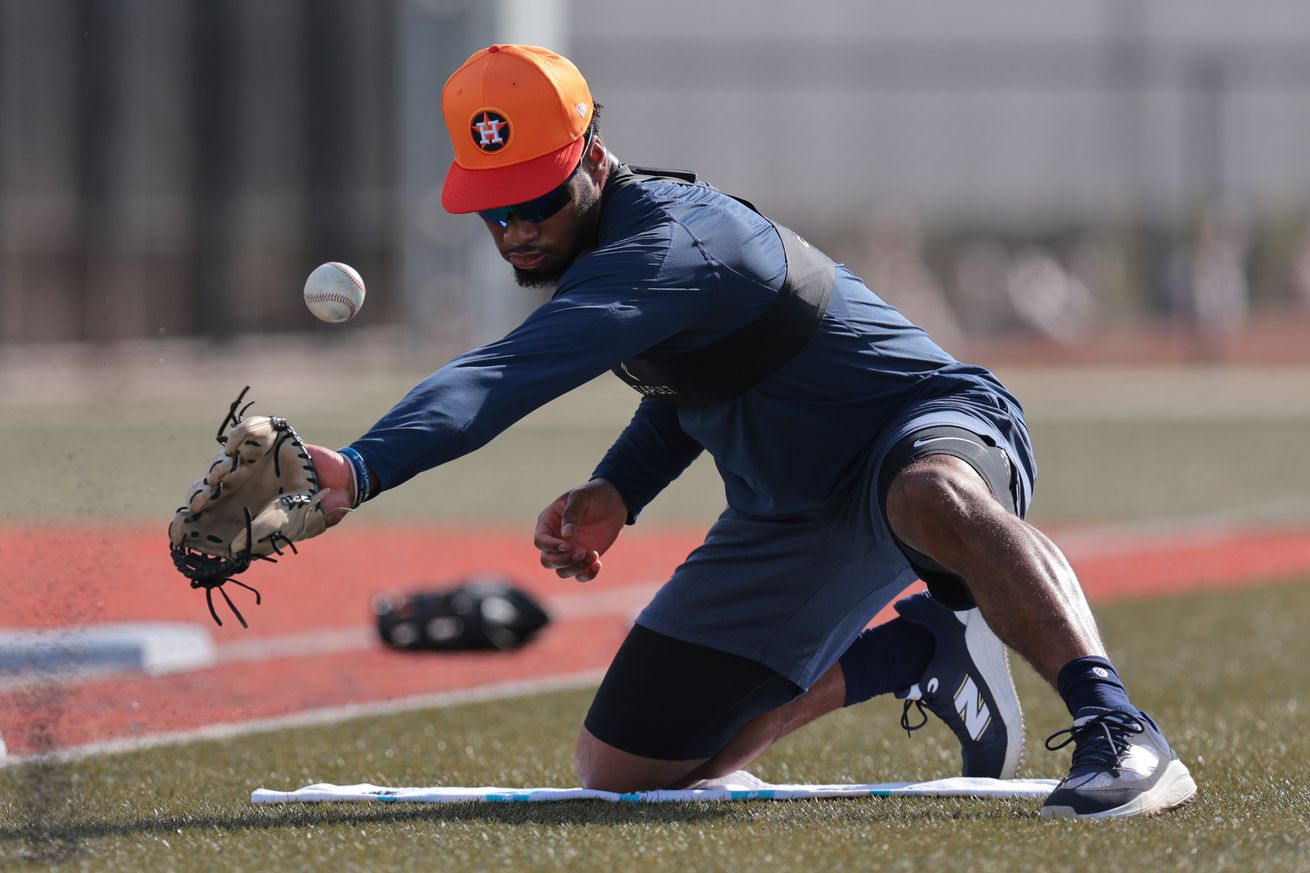
Injuries have croppled the lineup—at least for the time being—perhaps forcing the Astros’ hand in calling up Brice Matthews
In recent days, half of the Astros’ lineup has been comprised of Zack Short, Taylor Trammel, Cooper Hummel, Mauricio Dubon and even Shay Whitcomb. Dubon is a professional utility player and he is the only normal part of the batting order. “Normal” meaning outside of injuries, that is. The rest of those players are depth players who normally sit on the bench in reserve or on the Sugar Land AAA team.
No disrespect is intended for the fill-in starters. They have helped hold the lineup together. And individually each of them has his good baseball traits. The average wRC+ for Hummel, Short, and Trammel over this brief time is 87. Below average, but not terrible.
But it’s doubtful that the Astros signed them with the intention that they would all be starting at the same time. For instance, Trammel and Hummel likely were signed as platoon players. However, they are now playing against both RHP and LHP But the Astros really have little choice in the short term. When shortstop Jeremy Pena returns after the all star break (hopefully), the pressure on the lineup will ease a little bit.
The injured offense took another hit when Jake Meyers had to be helped off the field on Wednesday. We don’t know what the tests and examinations on Thursday showed. But it’s not unreasonable to anticipate that Meyers may be put on the IL.
On Thursday reporters said that the Astros intend to call up Brice Matthews, the highest ranked Astros’ player in AAA. Athletics writer Chandler Rome pointed to the possibility that Meyers could be placed on the IL in order to make room for Matthews. Although Rome reports that the Astros previously avoided calling up the 23 year old Matthews because of his 30% K rate and 67% contact rate, the potential impact of Meyers’ injury may have forced the Astros’ hand.
Most likely Matthews will play 2d base with the Astros, shifting Jose Altuve back to LF or DH. Dubon and Trammel are probable candidates to replace Meyers in CF. Matthews has a healthy .283, .400, .475 (.875 OPS) slash line in AAA. He also has .196 isolated power (ISO) with Sugar Land, which could be a needed jolt of power for the ML team. Matthews was recently added to MLB Pipeline’s Top 100 prospect list (at 98).
Matthews at the MLB level brings both excitement and concern. In some respects, he brings electric base running and exit velocity tools. He is a very patient hitter in AAA, which is quite good, but the swing and miss is a potential area of concern. An excerpt from the MLB Pipeline scouting report, which calls Matthews one of the best athletes in the system:
The bat speed in Matthews’ right-handed stroke and the strength in his compact 5-foot-11 frame produced some of the highest exit velocities in the 2023 Draft. He drives the ball in the air consistently and possesses at least plus raw power that plays from the left-field line to right-center, giving him the potential for 25 or more homers per season. After he struggled in his pro debut, the Astros helped him make adjustments to his swing and approach to try to help him make more regular contact. He rarely chases pitches but has more in-zone swing and miss than is desirable, resulting in a 31 percent strikeout rate in 2024.
The Rangers’ series should be an interesting test. Going up against a starting pitching staff led by All Star Jacob Degrom, will Matthews’ patient approach or his low in-zone contact rate prevail? At the least, if Matthews can get on base, his electric base running skills could be a difference maker.
One also has to wonder whether the recent injury issues have shifted the Astros’ thinking about acquisition of a LH bat. For instance, if Meyers’ injury causes him to be out longer than anticipated, does it shift the Astros’ interest toward outfielders who can play CF? Cedric Mullins and Mickey Moniak have been previously discussed and both have played CF in their career.
Mullins’ current slash line .215, .302, .415, (wRC+ 102) is reasonable enough. But his x-stats generally fall below his actual stats. I would view this as a risk factor. Moniak holds a more impressive slash line (.256, .304, .525 wRC+ 113). His x-SLG and xwOBA are also somewhat less than his actual stats. The fact that he plays for Colorado in Coors Field may also be a risk factor for Moniak (although the reasonably good wRC+ is ballpark adjusted).
Both Mullins and Moniak have hit 13 HR, which would put them near the top of the Astros’ leaderboard. Did Coors Field contribute to Moniak’s home run total? According to Baseball-Reference’s ballpark neutralizer, not much. B-Ref says Moniak would have 1 less HR (i.e., 12) on a neutral team.
The final question is whether Moniak or Mullins could provide decent defense in CF. Let’s be clear that neither outfielder is close to Jake Meyers as a defender. For both Moniak and Mullins, the answer depends on whether you rely on Defensive Runs Saved (DRS) or outs above average (OAA). In 2025 both players have been notably negative fielders in CF, according to DRS. But both have been about average in CF, according to OAA (+1 for Mullins and 0 for Moniak). Over his career, Moniak has been +6 in CF, based on OAA.
Your thoughts?